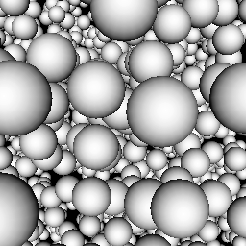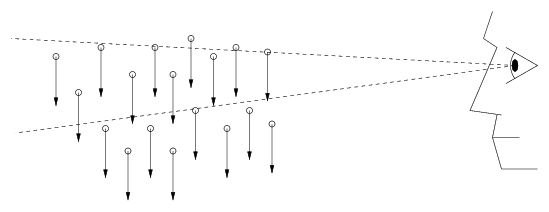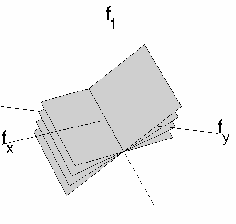Optical
snow
When an observer views a cluttered 3D scene, visible objects in
the scene undergo motion parallax. Objects that are closer to the
observer move faster than than those that are far away. Because
cluttered scenes produce a large number of occlusions and depth
discontinuities, the resulting image velocity field also contains a
large number of discontinuities. These discontinuities pose
a challenge for the visual system, which needs to simultaneously
estimate image velocities and velocity field discontuities. In
particular, classical methods for measuring image velocities assume the
motion the scene consists of a smooth surface or a small number (usually
two) of depth layers, but this assumption fails miserably in 3D
cluttered scenes. We referred to such complex motion fields as optical snow, since the massively
discontinuous motion fields are similar to what a (static) observer sees
when viewing falling snow. We have addressed this problem by
developing a set of techniques which are based on a 3D frequency domain
analysis (power spectrum of XYT).
Main Publications
- Optical Snow, M.S. Langer and R. Mann, International
Journal of Computer Vision 55(1): 55-71,
2003. (PDF)
- Principal components
analysis of optical snow, V.
Chapdelaine-Couture, S. Roy, M. S. Langer, R.
Mann. British Machine
Vision Conference (BMVC 2004), London U.K. pp.
799-808. 2004. (PDF)
- Optical snow and the aperture problem,
R. Mann and M. S. Langer, International
Conference on Pattern Recognition, Vol. IV, pp.
264-267, Quebec City, Canada. August,
2002.
(PDF)
- Dimensional analysis of image motion, M.S.
Langer and R. Mann, IEEE International
Conference on Computer Vision. Vol. 1 pp.155-162, Vancouver,
Canada (2001). (PDF)





